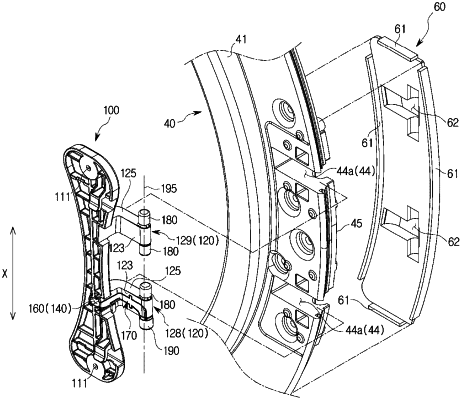| CPC D06F 37/10 (2013.01) [D06F 37/28 (2013.01); D06F 39/14 (2013.01); E05D 11/0081 (2013.01); D06F 34/04 (2020.02)] | 12 Claims |

|
1. A washing machine comprising:
a cabinet having an opening at a front side;
a drum rotatably disposed inside the cabinet;
a door configured to open or close the opening;
a hinge configured to pivotably couple the door to the cabinet; and
a wire extending from an inside of the cabinet to the door,
wherein the hinge comprises:
a hinge body coupled to the cabinet, wherein the hinge body includes:
a front surface;
a rear surface opposite the front surface and facing the cabinet;
an inner side surface facing the opening of the cabinet; and
an outer side surface opposite to the inner side surface, wherein the inner side surface and the outer side surface are disposed between the front surface and the rear surface,
a plurality of hinge arms extending from the front surface of the hinge body,
a plurality of protrusions protruding from each of the plurality of hinge arms to form a rotating axis of the door, and
an outlet formed in a form of a notch on the outer side surface of the hinge body between the plurality of hinge arms to be open in a direction away from the opening of the cabinet to allow the wire to pass through the hinge body.
|